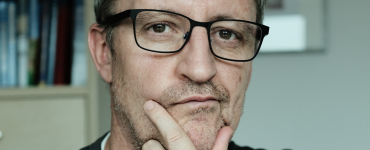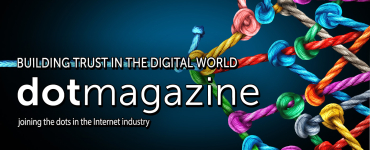On 12 September 2023, the eco Networks and IoT Competence Groups will meet at the Huawei OpenLab in Ismaning to discuss groundbreaking topics of current and future Smart Home applications under the motto “Digital Infrastructure as the Basis of Smart Home Applications” (a German-language event). Prior to the event, we had the opportunity to speak with Dr. Michael Lipka, Senior Manager Technology Strategy, Huawei Technologies Germany, about the crucial role of digital infrastructures and wireless technologies for Smart Home use cases, as well as to learn more about the highlights of the event.
Huawei is hosting the event “Digital Infrastructure as the Basis of Smart Home Applications”. What is your personal highlight of the event and what takeaways and insights can participants expect?
Dr Michael Lipka: First and foremost, I am looking forward to the exchange with the various experts. We deliberately don’t want to organise this day as a chain of frontal presentations, but also leave plenty of room for individual expert discussions. If the weather plays along, and I expect it to do so in mid-September, I am particularly looking forward to a relaxed atmosphere at the end of the day on our beautiful roof terrace. Refreshments will also be provided. But also in terms of content, there will be many interesting ideas for the development of the IoT. From our side, we want to direct our attention to the next step of mobile radio systems. Next year, with 3GPP Release 18, the biggest step in the scope of services since the launch of 5G will follow. The 3GPP has coined its own term, 5G-Advanced, for this. We want to take a closer look at this performance envelope in relation to IoT.
From your expert perspective, what are the most important trends in terms of high-performance infrastructures and technical aspects in the areas of IoT, Smart Home and intelligent building automation?
Dr Michael Lipka: From the perspective of a mobile communications supplier, the first thing to mention is, of course, the roll-out of 5G. 5G is a mobile communications generation that focuses particularly on machine communication, but which in turn is also very dependent on nationwide availability. This means that in the future, a high-performance universal infrastructure will be widely available, on which fundamentally very different IoT scenarios can be implemented.
Release 17 has now been completed within the 5G evolution, and significant innovations will be implemented in the functional areas uRLLC (ultra Reliable Low Latency Communication) and mMTC (massive Machine Type Communication), which are particularly relevant for IoT. Power-saving functions for end devices, of outstanding importance for IoT applications, are just one example. But other wireless technologies in combination with fibre optic expansion also play a major role in the successful implementation of the Smart Home and intelligent building automation. Especially in existing buildings, but not exclusively, the necessary wired bus installation has proven to be a considerable deterrent in the past. With the provision of a universal broadband connection in every room, coupled with a wireless bus system, costly cable laying work is no longer necessary, which will significantly promote the popularity of the Smart Home.
In recent years, the implementation of fibre to the room (FTTR) in buildings has gained momentum as a way to improve connectivity. What advantages do you see in using FTTR over other network architectures, especially in terms of supporting IoT devices and Smart Home application scenarios?
Dr. Michael Lipka: First of all, I must, unfortunately, note that the increase in importance in the sense of a strongly growing diffusion is still a thing of the future. It is the last link in a chain from FTTC to FTTH to FTTR and Germany has to concede that we are already significantly behind with the first link in international comparison – even though the expansion dynamics have currently picked up speed. About 30 per cent of households have the option to have a fibre-optic connection, but only about 10 per cent actually use it. But this initial situation also offers the opportunity to think end-to-end now and thus bring the full bandwidth of the fibre-optic connection to the end devices.
It is good to see that this is recognised and, through the EU’s Gigabit Infrastructure Act (GIA), FTTR is becoming mandatory for new buildings. In existing buildings, many users are not aware of how dramatically the purchased bandwidth is decimated on the way from the connection point to the end device. Sometimes 50-year-old copper cables reduce the available data rate from 1Gbps to less than 50Mbps on the upper floors. The situation is no better when it comes to WiFi, which is the most widespread connection technology in private households today. We reckon with an average loss of bandwidth of 50 per cent and a doubling of the latency time due to every wall or ceiling, apart from the interference with other WiFi users, which reduces the performance even more. With FTTR, the full bandwidth arrives in every room and, in combination with WiFi for the really last metre, this results in a great user experience. As an example of a broadband application in the Smart Home, let’s take the high-resolution image transmission from the door camera, which can be called up on the Smart Phone wherever you are in the house. In such an architecture, mobility of IoT devices can also be implemented much more comfortably, without disconnections.
Thank you very much for the interview, Mr Lipka.
Further information and free registration for the German-language event: Digital Infrastructure as the Basis for Smart Home Applications




